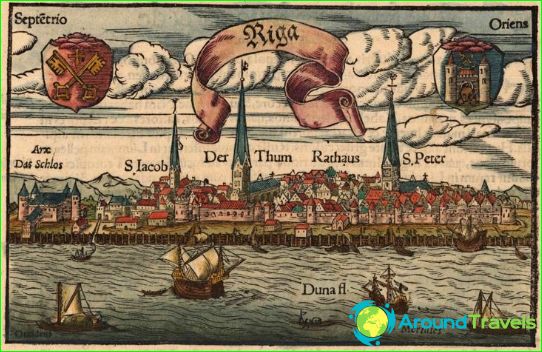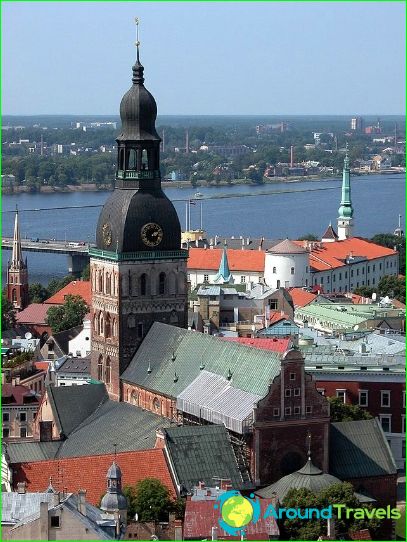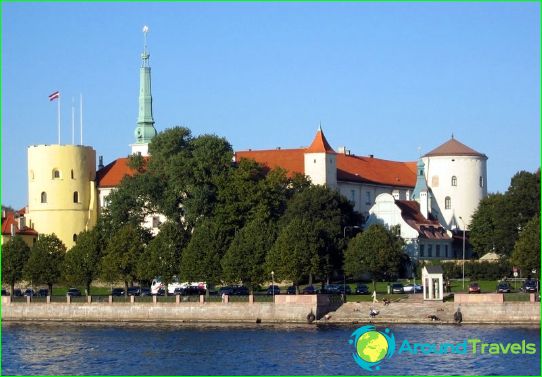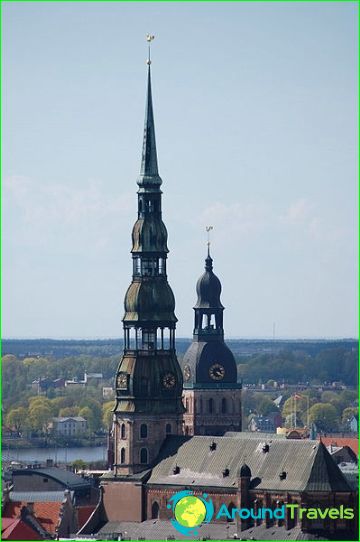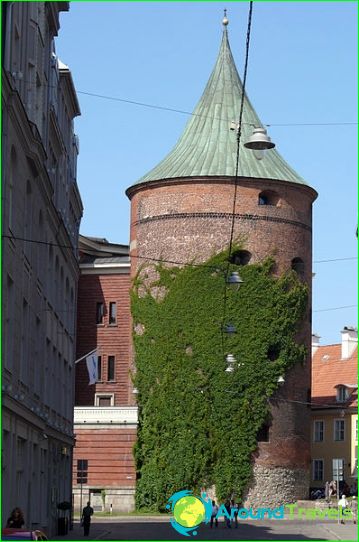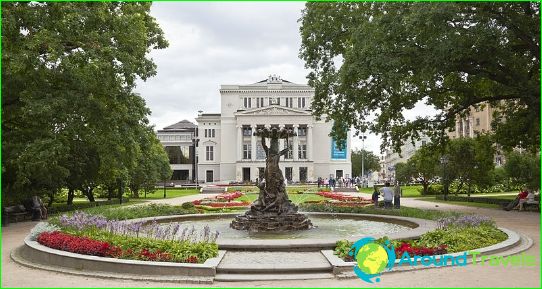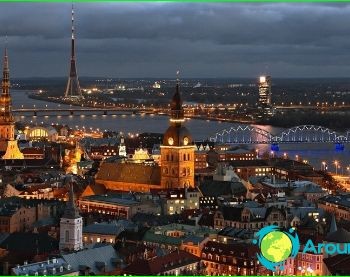History of Riga
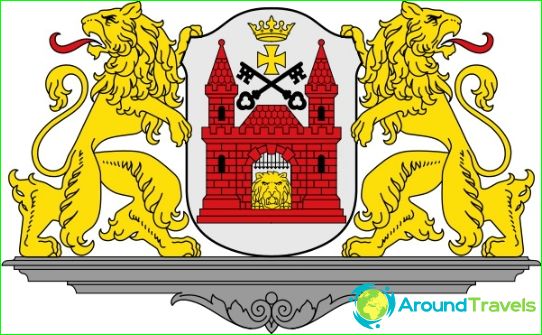
Coat of arms of Riga
Riga is the capital and largest city, as well as the political, economic and cultural center of Latvia. The city is located on the Gulf of Riga at the mouth of the Daugava River (Western Dvina).
Taking into account the strategic position of Riga (a convenient well-protected harbor at the intersection of important trade routes), settlements on the site of the modern city and in its surroundings existed in ancient times. It is known that in the 2nd century AD. on the site of today's Riga there was a settlement Duna Urbs, which became a fairly large shopping center in the early Middle Ages. In those days, the Livs and Curonians (Baltic-Finnish peoples) already lived here, whose descendants are actually considered the ancestors of Latvians..
Middle Ages
In the second half of the 12th century, the region was massively flooded with German merchants and crusaders, and already in 1201, with the permission of the Pope, Bishop Albert Buxgewden, who arrived from Bremen, laid the eponymous fortress city at the mouth of the Riga River, and also founded the Order of the Swordsmen, which was later annexed to the Teutonic Order. In the following decades, the city grew and developed rapidly, becoming by the end of the 13th century the third largest trade center in the Baltics (after Lübeck and Gdansk), as well as the seat of Riga's archbishops. In 1283 Riga joined the Hanseatic League, which provided the city with economic and political stability for several centuries..
In 1581, as a result of the Livonian War, Riga came under Polish rule, but already in 1621 it was occupied by Sweden. A new page began for the city with the beginning of the so-called Northern War (1700-1721) between the Swedish Empire and Tsarist Russia for domination of the Baltic Sea. After a long siege in 1710, Riga became part of the Russian Empire. By the end of the 18th century, Riga had become one of the main port cities of the Russian Empire and a major industrial center, and by the end of the 19th century, the second largest city in the western part of the empire after St. Petersburg. During the 1905 revolution, which swept virtually the entire Russian Empire, Riga became one of the main centers of the rebels.
XX century
In September 1917, Riga was occupied by the German army, and the Russian Empire, thoroughly weakened by the next revolution, was practically on the verge of collapse. The First World War ended for Russia with the signing of the Brest-Litovsk Peace Treaty (March 1918) and the loss of a significant part of the territory. The Baltic countries during this period were still under German control, but after the signing of the so-called Compiegne Armistice, Latvia was able to claim its independence, which was proclaimed on November 18, 1918 in Riga, which became the capital of the independent Republic of Latvia..
In 1940, during World War II, Latvia was occupied by the USSR and Riga became the capital of the Latvian Soviet Socialist Republic. From 1941 to 1944, Riga was under German control, after which it returned to the USSR. During the hostilities, the historic center of Riga was severely damaged.
In the post-war period, Riga developed rapidly and soon became one of the largest industrial centers in the USSR. The Latvians were able to regain their independence only in 1991. Riga became the capital of the independent state of Latvia.
Today, elegant and cozy Riga is the heart and pearl of the Baltics with an incredibly rich cultural heritage. The historic city center is a UNESCO World Heritage Site and perfectly illustrates the long history of the wonderful city.
Pictures of Riga
-
Coat of arms of Riga
-
Riga in the 16th century
-
The Dome Cathedral
-
Riga castle
-
House of Blackheads
-
St. Peter's Church
-
Powder tower
-
Riga Opera
